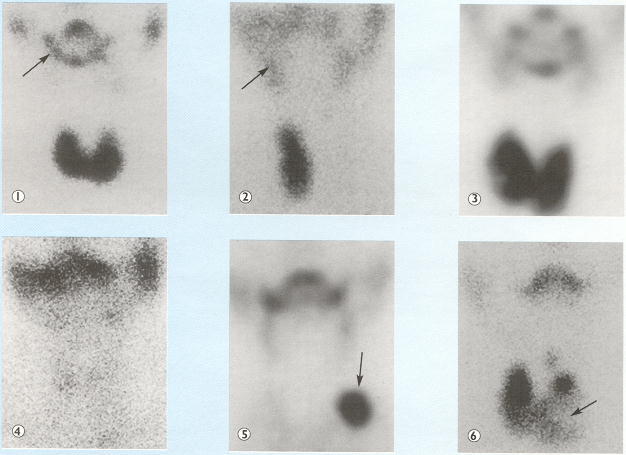Box 3.6Radioisotopic scanning of the thyroid gland
Uptake of a radioactive isotope by the thyroid gland is used to determine:
Isotopes. 125I has a radioactive half-life (t1/2) of 60 days, 131I a t1/2 of 8 days and 123I a t1/2 of 13 hours. A radioisotope of technetium (99mpertechnetate) is often used because it has a usefully short radioactive t1/2 (approximately 6-h) and, unlike radioactive iodine, is not organified in the thyroid gland. Radiation dose to the thyroid is thus low.
Localization and size. Uptake of isotope in a normal gland

and in a patient whose left lobe was surgically removed

. Arrow indicates uptake of iodine in the salivary glands.
Overall function. More rapid and increased uptake of the isotope in primary hyperthyroidism

compared with normal thyroid activity

and slower, reduced uptake in hypothyroidism

.
Regional function. ‘Hot’ nodule in upper left lobe of the thyroid gland (arrow) showing increased isotope uptake and suppression of uptake in surrounding tissue

. ‘Cold’ nodule in lower left lobe (arrow) showing reduced isotope uptake

.







